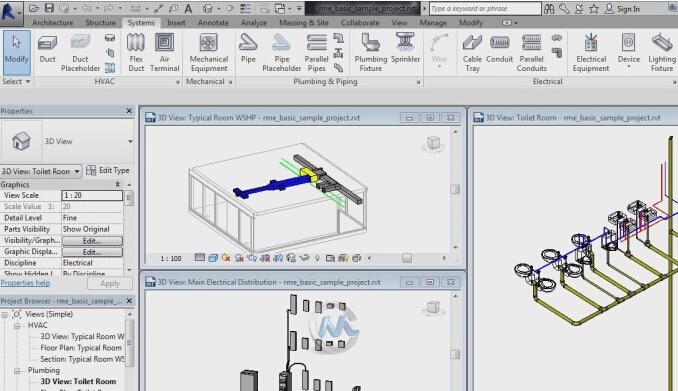Revit教程:从入门到精通,一步步学会Revit软件的使用技巧

Introduction:
Revit software is a powerful tool used in the field of architecture, engineering, and construction (AEC). It enables professionals to create and manage complex building designs and infrastructures. The aim of this article is to provide a comprehensive guide, based on the book "Revit Tutorial: From Novice to Master," to help readers learn the essential skills required to navigate and utilize the Revit software effectively.
Section 1: Getting Started with Revit (Approximately 250 words)
1.1 Understanding the Interface:
The Revit interface consists of various panels, toolbars, and menus. Familiarizing yourself with these elements is essential to efficiently navigate through the software. We will discuss the key components like the Ribbon, Quick Access Toolbar, Project Browser, Properties Palette, and more.
1.2 Setting Up a New Project:
Learn how to create a new project in Revit, defining the project location, units, and other necessary parameters. This section will also cover importing and linking existing CAD files into Revit.
Section 2: Basic Revit Functionality (Approximately 300 words)
2.1 Building Elements:
Explore the basic building elements available in Revit, such as walls, floors, roofs, doors, windows, and more. Understand the different properties associated with each element and learn how to modify and customize them.
2.2 Views and Sheets:
Discover how to create and manage different views, including floor plans, elevations, sections, and 3D views. This section will also cover generating construction documents by setting up and organizing sheets.
Section 3: Advanced Revit Techniques (Approximately 350 words)
3.1 Families and Components:
Understand the concept of families and components in Revit. Learn how to create custom families or use pre-existing ones to enhance your designs. This section will also cover modifying families and adding parameters for improved flexibility.
3.2 Collaborative Worksharing:
Explore the worksharing capabilities of Revit, allowing multiple users to work on the same project simultaneously. Understand how to create worksets, manage user permissions, and synchronize changes effectively.
Section 4: BIM (Building Information Modeling) and Analysis (Approximately 350 words)
4.1 Introduction to BIM:
Understand the significance of Building Information Modeling (BIM) in the AEC industry. Learn how Revit facilitates the creation of a virtual model that includes rich data and information about the project.
4.2 Analysis Tools:
Discover the various analysis tools available in Revit, such as energy analysis, lighting analysis, and structural analysis. Learn how to use these tools to evaluate and optimize your designs for performance and sustainability.
Section 5: Revit Tips and Best Practices (Approximately 250 words)
5.1 Time-Saving Tips:
Explore useful tips and tricks to boost your efficiency while working with Revit. Learn keyboard shortcuts, utilize model/design options effectively, and implement parametric modeling techniques.
5.2 Best Practices:
Understand the importance of maintaining a well-organized project structure and adopting industry-standard naming conventions. Learn about backup and file management practices to ensure the safety and integrity of your project data.
Conclusion (Approximately 100 words):

Revit is a powerful software that can significantly enhance the productivity of professionals in the AEC industry. By following the step-by-step guide provided in this article, readers can acquire the necessary skills to effectively utilize Revit for their projects. Remember, mastering Revit requires practice and continuous learning. Embrace the process and keep exploring the software's capabilities to become a proficient Revit user.
BIM技术是未来的趋势,学习、了解掌握更多BIM前言技术是大势所趋,欢迎更多BIMer加入BIM中文网大家庭(http://www.wanbim.com),一起共同探讨学习BIM技术,了解BIM应用!
相关培训